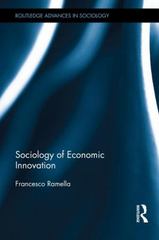Question
Q1. A company has an inverse demand function p = 8 - 0.004Q, and a total cost function TC = Q + 0.006Q^2. (p is
Q1. A company has an inverse demand function p = 8 - 0.004Q, and a total cost function TC = Q + 0.006Q^2. (p is in dollars, and Q is in thousands of units).
a What is the optimal price p* and quantity Q* to maximize its profit?
b. What is the point elasticity of demand at (Q*, p*)? Rounding to two decimal places.
c. Suppose now the company adopts a more efficient technology and the cost of producing each the additional unit reduces by 50 cents. What is the new marginal cost function? What is the new optimal price and quantity, i.e., Q*new and p*new? (Hint: the marginal cost reduces by 0.5 dollars).
d. Given the new technology, what is the point elasticity of demand at (Q*new, p*new)? Compared with
e is it more or less elastic? Rounding to two decimal places
Q2. Consider again the avocado example, where demand and supply functions are Qd = 160 - 40p Qs = 50 + 15p Suppose a severe drought hit California, and the state government decided to subsidize farmers 40 cents for each pound of avocados produced. (Unit: Q is million pounds of avocados, and p is dollars).
a. With government subsidy, write down the functions of demand and supply.
b. What is the new equilibrium price and quantity of avocados? (Rounding to two decimal places)
c. Plot the demand and supply curves in the same graph. Label your horizontal and vertical axis properly (you can graph in either (Q, p) or (p, Q) space). Indicate the end points of each curve on each axis. Indicate the change of direction for any curve when there is a government subsidy (note: the change of direction depends on whether you graph in (Q, p) or (p, Q) space).
d. What is the price that farmers receive, and the price that consumers pay for each pound of avocados?
e.. What is the percentage of subsidy pass-through to consumers? What is the percentage of the subsidy that farmers retain?
e. How much in total does the state government have to subsidize the farmers?
f. Suppose the 40 cents subsidy is given to consumers. Repeat questions in (1)-(7). How to answers change?
Q3. The demand and supply for wine are given by Q = 20 - P and Q = 3P, respectively. P is the dollar price of wine per bottle, and Q is the number of bottles (unit: thousand bottles).
a. What is the equilibrium price and quantity?
b. Suppose now the government imposes a per-unit tax of $4 on the sellers. Solve for the new equilibrium price and quantity, the price sellers received, and the price consumers paid.
c. Calculate the government tax revenue.
d. What fraction of the tax is passed onto consumers? What fraction of the tax is actually paid by sellers?
e. If the $4 tax is collected from consumers, repeat questions (2)-(4). How does answers to 3-4 change?
Q4. Assume that the demand for a product X is heavily influenced by the price of another product Y (Py), and the income of consumers (I).
The cross-price elasticity of X with respect to Y is exy = 1.25, and the income elasticity is eI = 2.
a. Are X and Y complements or substitutes? Why?
b. Is X a normal or inferior good?
c. Suppose now Py decreases by 5%, and consumer income decreases by 1%. Will the quantity demand of X increase or decrease? By what percent?
Step by Step Solution
There are 3 Steps involved in it
Step: 1

Get Instant Access to Expert-Tailored Solutions
See step-by-step solutions with expert insights and AI powered tools for academic success
Step: 2

Step: 3

Ace Your Homework with AI
Get the answers you need in no time with our AI-driven, step-by-step assistance
Get Started


